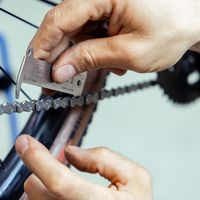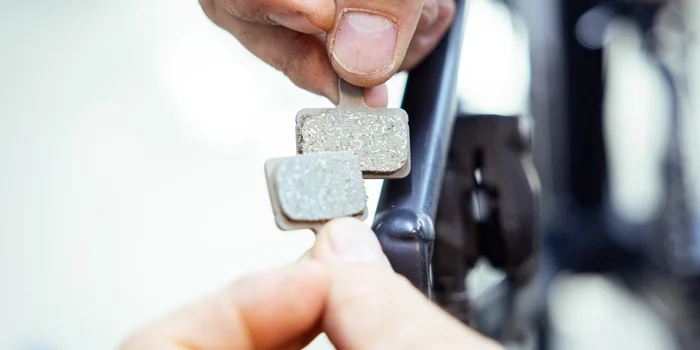
Guide
How to prep your bike chain for spring
by Patrick Bardelli


Nowadays bikes are generally equipped with disc brakes. Their advantage over rim brakes? The brakes are equally effective in all weather conditions with little effort. However, new disc brakes have to be bed in correctly first.
If I had to define the function of bike brakes, it would probably come down to these two terms – safety and control. And apart from the chain that drives my bike, the brakes are probably the parts subjected to the most stress. That’s why it’s worth taking a closer look.
I took a trip to see Elia Widmer to do exactly that. At Hilite Bikes in Basel, the trained toolmaker is involved in the construction of their customised bikes on the one hand and, on the other, takes care of the minor and major ailments of racing bikes and the like as a bicycle mechanic. We recently devoted an article to the wear and tear of the bicycle chain. You can get all the details on it here:
Whether it’s a mountain bike, road bike, city bike or gravel bike, modern bikes are generally equipped with disc brakes. They’ve more or less put the brakes on the classic rim brake. Sorry for the pun. This guide isn’t comparing the two technologies –it’s about how to correctly bed in your new disc brakes and/or new pads to achieve optimum braking power.

There are microscopic bumps on the surfaces of the brake disc and the brake pads. These must be evened out, otherwise the tips will rub against each other and generate an extremely high temperature. As a result, the pads can glaze over and the disc can lose shape.
There are different instructions on how to bed new brake discs and/or pads correctly. Elia Widmer’s tip is as follows:
This can take some time and can be a little tiring. If you’re on an e-bike, the motor will make this process feel much less tiring.
A squeaky brake isn’t dangerous, but it is extremely annoying. Elia also has a tip for when you get your bike out of the cellar in spring and the brakes are noisy: «Keep calm, pull the brakes and keep pedalling against the resistance until the squeaking noise has disappeared. It takes a moment but it usually stops after a while.» If you want to cause some friction with your neighbours, you can try it out in your street on a quiet Sunday morning, says the expert grinning. Most people look for a road or path away from sensitive ears when they do this.
It’s common for brakes to start squeaking in the wet. According to Elia Widmer, however, this is normal and stops on its own after a while.
My next story from the bike workshop is coming soon. The topic: fitting new tubeless tires.


From radio journalist to product tester and storyteller, jogger to gravel bike novice and fitness enthusiast with barbells and dumbbells. I'm excited to see where the journey'll take me next.
Practical solutions for everyday problems with technology, household hacks and much more.
Show all